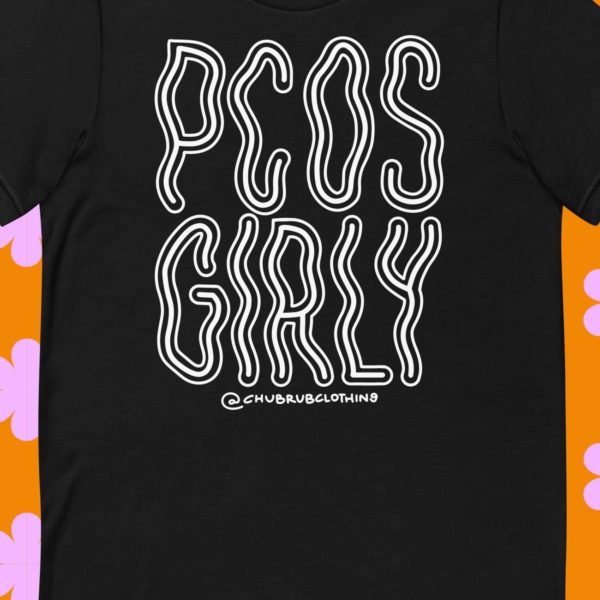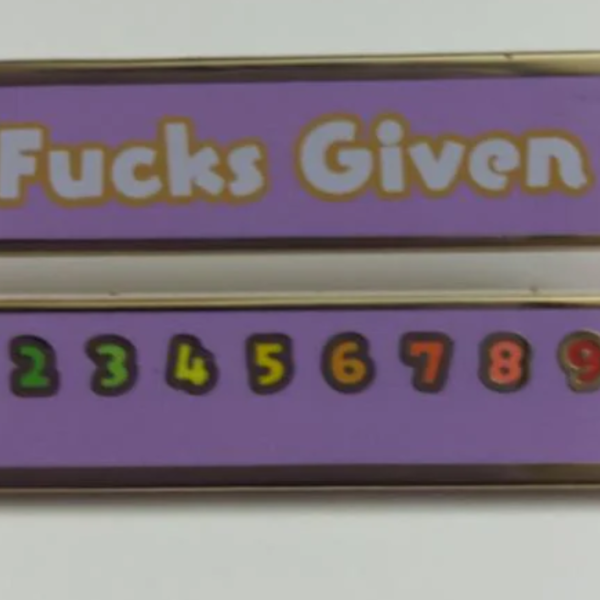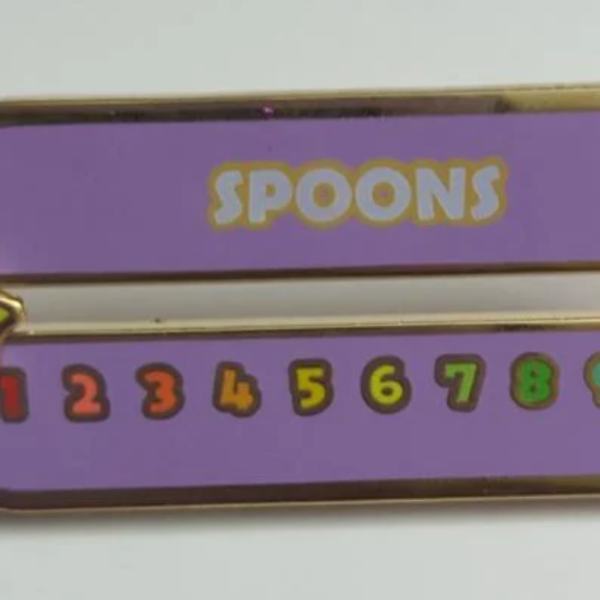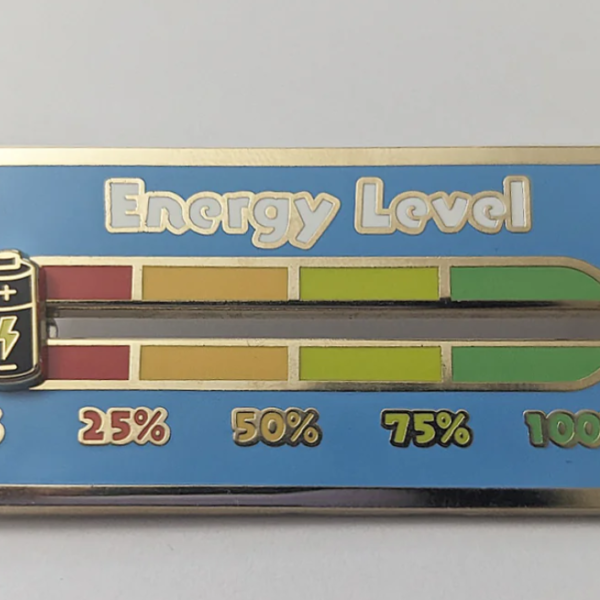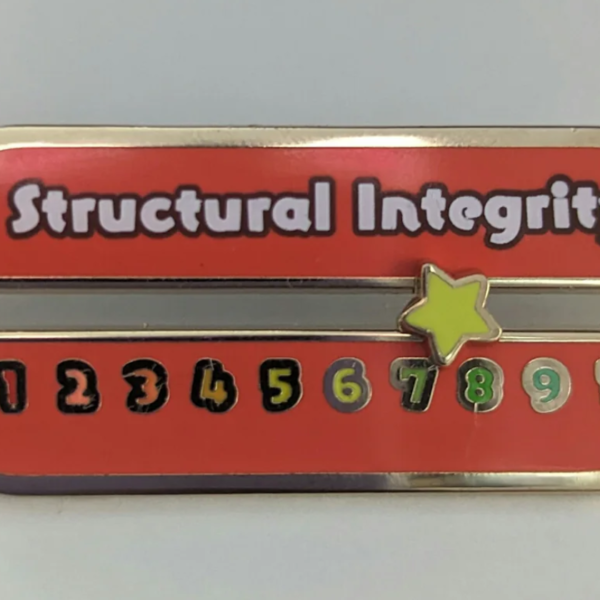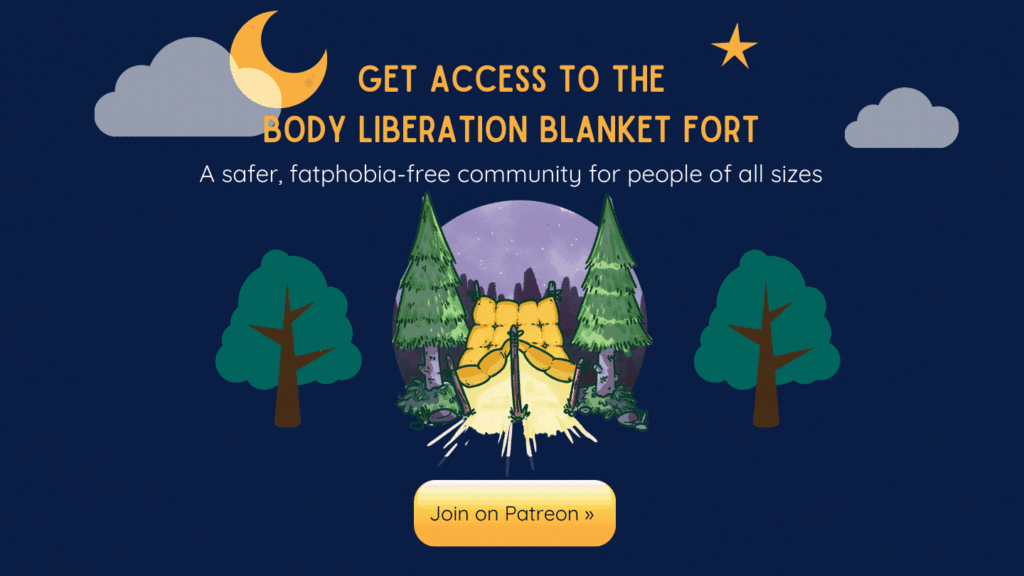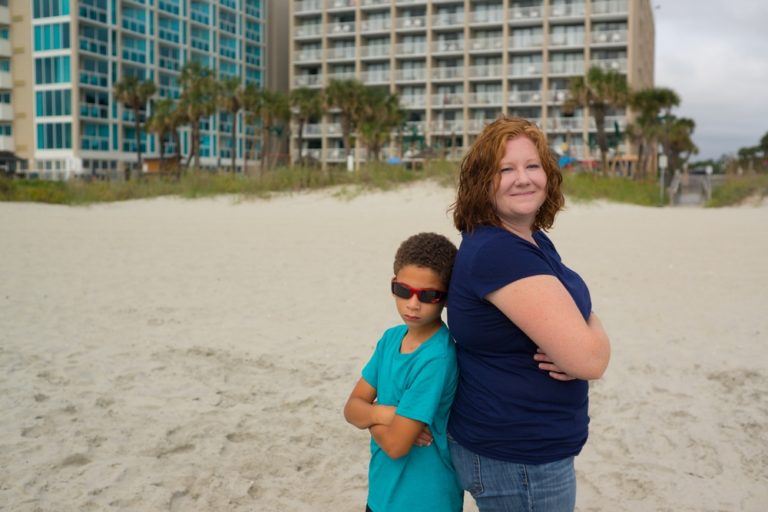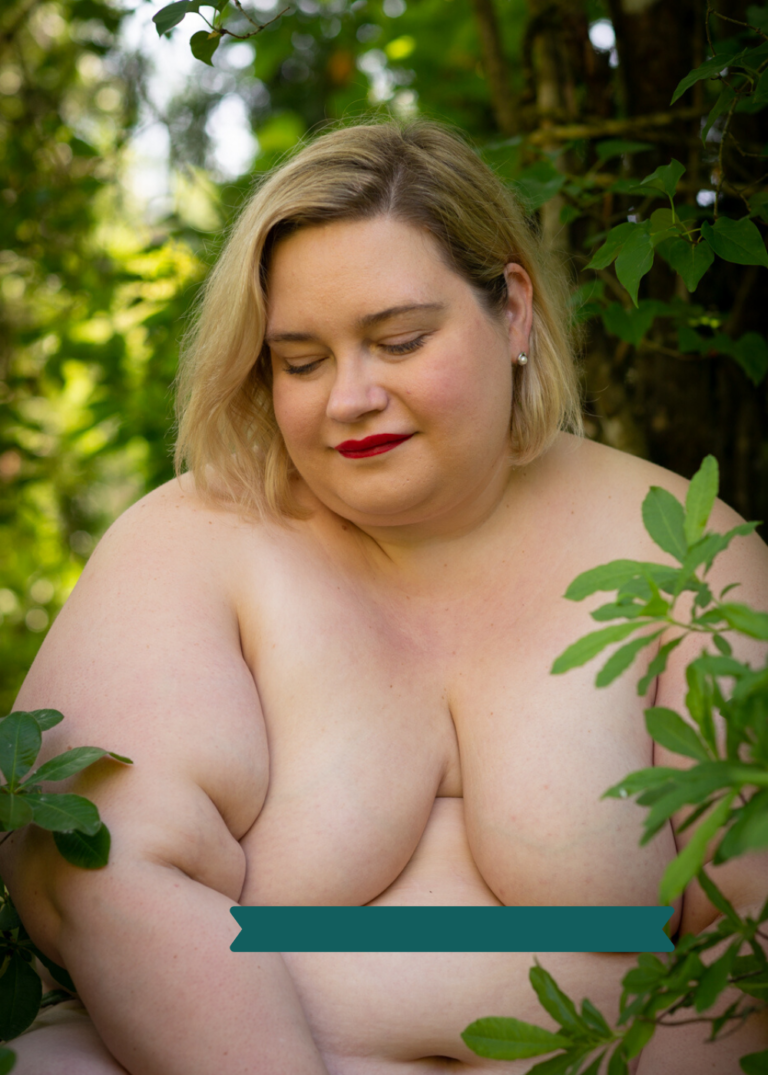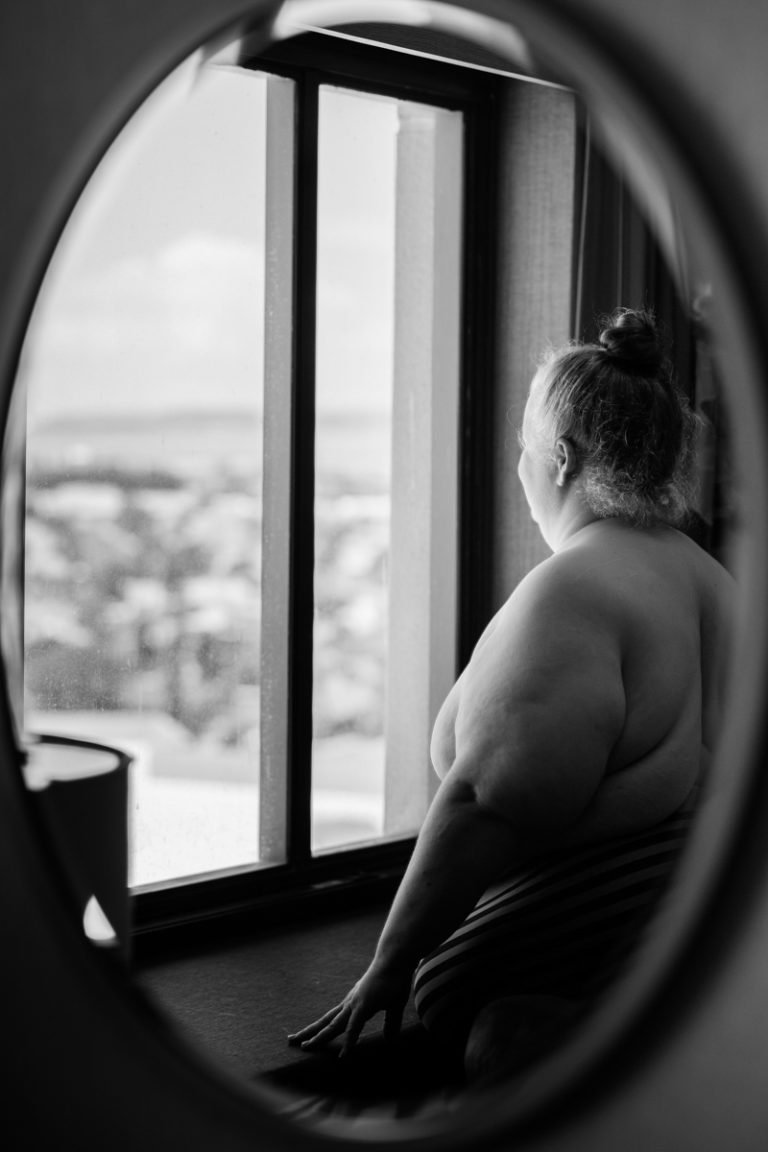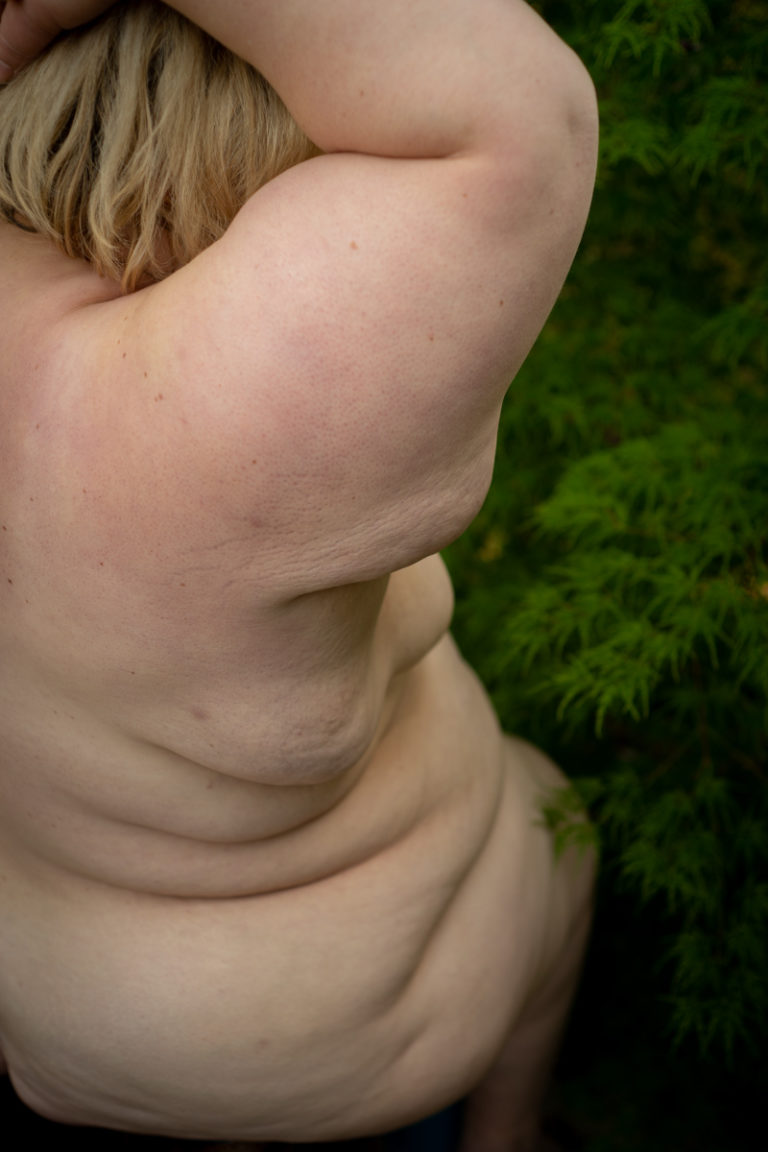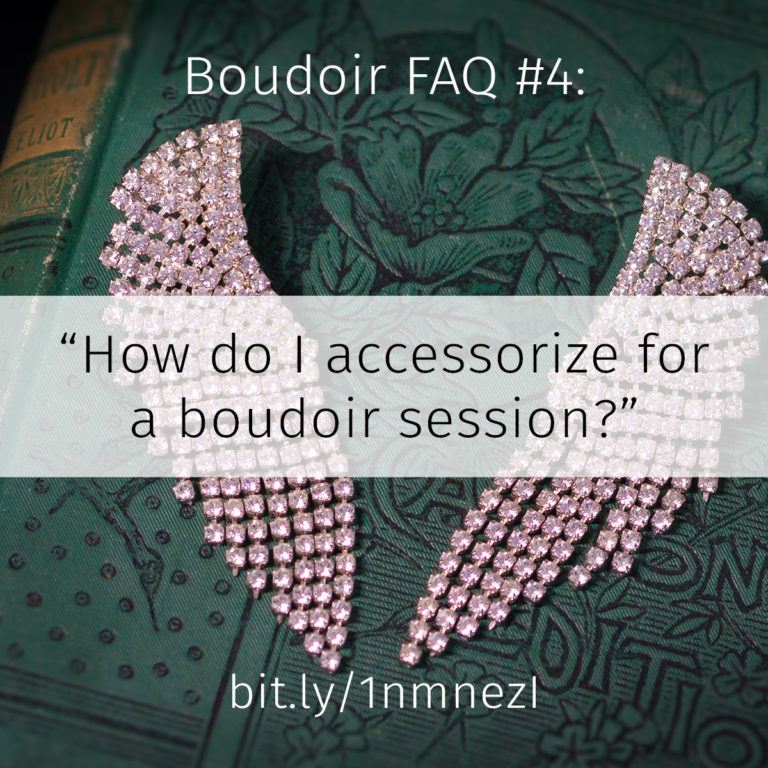Bodies in the Media and Why Representation Matters on Femtastic
Katie Breen interviews Lindley Ashline, founder of stock photography website Representation Matters (now Body Liberation Stock). Lindley explains why it’s so important that we see representations of diverse bodies in the media, and how she uses her platform to create stock imagery featuring people in all types of bodies – large bodies, brown and black bodies, bodies belonging to LGBTQIA+ folks, aging bodies, disabled bodies, tattooed bodies, and more. Lindley also explains how and why businesses and content creators can and should use these types of images in their work, and why it’s important that ALL of us diversify the types of bodies we expose ourselves to on social media.
Transcript
Katie Breen: Hi, there. This is the Femtastic Podcast… and I am Katie!
On today’s episode, I’m speaking to Lindley Ashline. Lindley is a professional photographer. And she is the founder of the website, RepresentationMatters.me. So what that is is a website for stock photography that showcases bodies that we don’t typically see in traditional media. So what that means is that Lindley and her contributors take photos of people in bodies that are larger, that are brown or black or LGBTQIA+ or gender non-conforming.
And so on this episode, Lindley is going to talk to us about what she does, how she does it, and why it’s so important that we see images of people in the media that look different from the images that we typically see in the media, that are not skinny and white and of European descent, and cis-gender, and heterosexual.
So I hope you enjoy this conversation with Lindley about why representation matters.
Hi Lindley.
Lindley Ashline: Hi!
Katie Breen: How’s it going?
Lindley Ashline: Good.
Katie Breen: I’m so happy that I saw your work on the internet and reached out and that we’re able to do this!
Lindley Ashline: Me too! It’s always a fun opportunity to be able to talk about what I do in life.
Katie Breen: Yes. Well, speaking of which, who are you and what do you do and why?
Lindley Ashline: My name is Lindley Ashline. And I’m a photographer who specializes in capturing images of bodies that you don’t see very often in the media, or in advertising, or in Instagram. And what that means is mostly people in large bodies or fat—I do use the word fat because I have reclaimed that for myself. So you will hear that in this episode. But I also photograph people of color and people in the LGBT community.
I run RepresentationMatters.me, which is a stock photo site featuring people in large bodies, people of colors, and you guessed it, people who identify as LGBTQIA+.
Katie Breen: Cool! So what spurred you to start Representation Matters?
Lindley Ashline: Well, I want to touch really briefly on what stock images or stock photos are because we’re not all familiar with that.
Katie Breen: Right! I forget that that’s not so many people know.
Lindley Ashline: Folks who work in corporate backgrounds or in marketing or advertising, or have small businesses are mostly familiar with this, but just to touch on it.
Katie Breen: Good point.
Lindley Ashline: Stock images or stock photos are the images that you see in social media posts, magazines, advertising, the internet, billboards.
Most companies don’t have the budget or the resources to create their own photos for every single thing they do, so they use stock images, which are images that they’re buying from other sites that are dedicated to providing these images to fill in.
So if I’m a blogger, and I wrote an article on honeybees, I may or may not have the resources to go track down a beehive and take my own photo, but I may go to a stock image site and buy a nice close-up photo of some honeybees.
Usually, these are photos. They can be any kind of image. They can be a vector image, or digital arts, or an icon—anything that can be purchased and, sort of, slotted into an article or a post.
So how this got started was back in 2015, like many entrepreneurs, I was working a really terrible corporate job. It was the last in a series of terrible corporate jobs. I said I can’t do this anymore and I turned to photography, which I had been doing for a really long time. Mostly nature photos. And I began learning to do portrait work. And in 2016, and most 2015, I opened a portrait and boudoir studio here in Seattle, and I had been doing that for about a year.
New at Body Liberation Stock
In mid-2016, Getty Images and Refinery29 released a stock image collection together. They got a ton of publicity. And it was called the 67% Project.
It was a stock image collection that was meant to represent, I guess, the average American person—average in size. So these were people who were maybe size 14,16, in a variety of activities. And the photos are beautiful. They got a ton of publicity with a huge PR campaign. And many small businesses and bloggers were really excited about this opportunity to represent people who weren’t necessarily thin and white.
But there was a big problem with this. Like other people, I got curious, and I went over to Getty to see what these images were like. And these images, again, the quality was beautiful, but they cost hundreds of dollars. It was only a five-year image license, which meant that if you bought one of these images and put it in your blogpost, after five years, you’d have to go and pay for it again.
This is a stock image model that is a perfectly legitimately model, but it just doesn’t work very well for a blogger, where the work that your purchase is being seen regularly, as opposed to like a one-time billboard—yes, exactly.
And there were some other restrictions in the license that made it not all that practical.
Well, I had already spent a year doing portfolio work in my photography business. So I had been taking volunteer models who, again, were in my audience of larger people and people with color and so on, and practicing with them, and creating beautiful images of my own. And so I said, “Wait! Why do I not already have these out as my own stock image collection? Why can’t I make these available and test a little bit, and see whether there’s a need for this.”
And the response is just incredible. I immediately had folks reaching out to me and saying, “This is great, but where are the photos of x? Where are the photos of y? Where are the photos of people in very large bodies who are also transgender couple? Where are the photos of fat businesswomen? And where are the photos of black doctors?”
It was just—the need is so incredible.
There’s so much out there that we don’t have. And I’ll talk about why that’s important here in a minute, but just again, there was so much need and so many people reaching out to me that it really took off because there weren’t very many other businesses selling that need for stock images that are outside a very narrow body ideal that we see in the media.
Katie Breen: That’s awesome. So yes, but why is it so important that we see images of diverse bodies in stock photography?
Lindley Ashline: That’s a great question because it’s so easy to find stock images of people who are very thin and look like models, and are usually white folks.
Katie Breen: And they’re smiling while eating salads?
Lindley Ashline: I have some very profane rants on women smiling alone while eating salad. And one of the most popular images on Representation Matters is of a fat African-American woman, who is throwing a head of lettuce over her shoulder and not smiling. She doesn’t look sad or anything, but she’s not, you know. She’s not thrilled about her lettuce alone.
At any rate, we know some from studies, multiple, multiple studies that have been done over several decades that what we see, the images that we see around us influence how we see ourselves. And it’s very easy to think, “Well, why would a single image in a magazine affect my own body image?”
And it’s not a single image. It’s the aggregate of everything we’re surrounded by.
If you go into a grocery store and waiting in the checkout line, most of the people that are on the magazine covers are going to look a certain way. If you go into a bookstore, most of the people on the cover of those books and magazines are going to look very similar. If you go onto Instagram, and you’re just browning the random explore category, the bodies are going to look, in general, a very specific way. And that aggregates what affects us.
And so the more we see that aggregate idea, the more we compare ourselves to it.
But on the flipside, when we see bodies that look like ours, that share some kind of common ground with us, it improves our self-image and our confidence in our bodies. From a business owner standpoint, when you’re talking about stock images, what that means is that if my target market, from a business standpoint, is African-American women in their 50s, and all my images are of thin, white women in their 20s, that doesn’t make me as a 50-something African-American woman too very welcome.
But for clarity, in real life, I am a 38-year-old CIS gender, fat, white woman. But for the example, it’s not going to make me feel very welcome.
If I have a clothing store and I carry plus-sizes in my clothing store, but my Instagram is 100% thin women, plus-size women aren’t going to come to my store because they’re not going to know that I carry plus-size, because everything they see does not include that.
And so both from a fitness and social justice standpoint, it’s important for us to be changing the conversation with the images that we use. But also, from a very practical financial standpoint, it’s so important to use images for our businesses that look like our customers because how many people that are walking off the store into your clothing boutique are going to go look like the first stock image that you see over at Getty? Not very many.
Katie Breen: Yes, I love that. I like that. It creates a marketing world that is more like the actual world. You said you’re in the grocery store, you’ll see a magazine, and it’s a fit, white woman with straight hair. I’m a white woman, but I don’t have straight here. I’m not skinny. And at least for me, personally, it’s like growing up and seeing that as the image that is the idea or the one that’s put on a pedestal. It makes you think like, “What’s wrong with me? I’m not normal. I’m not desirable because I don’t look like this.”
Lindley Ashline: Exactly.
Katie Breen: Yes, so I love this.
Lindley Ashline: There’s a story. I have simply lost her name but maybe we can put it in the show notes. There’s an article that I saw just the other day about a black ballerina who spends a lot of time walking around the streets of her home city in her full-on ballerina get-up—tutu and everything, because she is showing black children that they too can have a career as a ballerina. And the power of seeing somebody like you is that important. That she’s making a real difference in people’s lives by being visible in public. And part of what’s important about stock images is that it’s not just a smiling women with salad that we see, almost every time, you see any sort of health care or medical-related image.
New in the Body Love Shop
When you go to your health insurance’s website […] or whatever, again, those images tend to match a very specific ideal. And so we’re not seeing black doctors and women doctors necessarily, or fat doctors. We’re seeing—you know what this is.
Katie Breen: Yes, with mothers, if you look for stock images of mothers, they’re either completely exasperated in a really unnatural and depressing way, or they’re completely happy in a really unnatural and depressing way. So there’s not realistic images of, “Oh, this is what a mother looks like,” or a female entrepreneur, what she looks like.
So yes, it’s funny because I, with my background in advertising and marketing, I’ve been in the position sometimes of trying to find stock images, and yes, I totally have seen this firsthand where it’s like, “Okay, these are all ridiculous photos. They don’t look like anyone I know, or anyone I want to know, and but this is the only option.”
And so we’re just reinforcing this fake ideal.
Lindley Ashline: Yes, and in every area where there are stock images, there’s a need for more diverse bodies in those stock images. And not just bodies too. We need to represent people who actually have an invisible disability, who actually have bipolar disorder or who are actually a same-gender couple, and are actually a couple with each other. Because telling those stories is not only important in general, but it’s also important to get that authenticity of having people who actually—that’s their lived experience.
Katie Breen: Yes. Not like a Scarlett Johansson playing a transgender woman.
Lindley Ashline: Yes, exactly. And of course, portraying an invisible disability can be really challenging too because if I have someone who is modeling for me who has bipolar disorder, I don’t want to spend all my time making her look fab. So it’s a challenge mode of photography standpoint to convey this is a person who has that lived experience without falling into stereotype.
Katie Breen: Right. Without making them a trope. Because I feel like a lot of times, if you read Wiki How or something, that’s just a random example, the stock imagery for someone who has a mental illness would be someone pulling out their hair, looking exasperated. And that’s—really, that’s the best you can do to convey mental illness? It’s someone that looks like that? What?
Lindley Ashline: One of the really common ones is the thin, white man who is in his early 40s who’s pulling his hair in front of a white background. You know because you’ve seen it.
Katie Breen: I’m picturing it. And he’s wearing a blue button-down.
Lindley Ashline: Here’s one of my other favorite ones. Some of my favorite ones include the older woman who both looked confident and looks like a joke. And she’s always by herself on a plain-colored background.
That one is not quite common. But I found another one of these the other day […]
Business stock photos are the worst. You have the conference room. You know the one. And there’s five people. There are three white man—three white men, excuse men. There’s the Asian woman and the black man.
Katie Breen: Yes, and they’re all wearing pantsuits.
Lindley Ashline: Yes. And just breaking out of that is so powerful. Again, not only from a—we can legitimately change the conversation of the world in how people see themselves through the images that we, like I as an individual, am putting out there, you, as an individual, are using your business. Collectively, we can literally change the world. But beyond that, we’re changing the audience that we attract.
Again, if I am putting out that terrible business stock photo, not only is it sad and dated, but 58,000 other businesses have used that exact same photo, like literally have bought that exact same photo.
Katie Breen: There’s this one photo that I see all the time for customer service. It’s the same woman—
Lindley Ashline: With the headset.
Katie Breen: Yes. The headset. She has shoulder-length brown hair. She might be white. She might be, maybe Hispanic. You’re not really sure. Yes.
Lindley Ashline: And half the time, she’s inappropriate, sort of weirdly sexy.
Katie Breen: Yes, exactly.
Lindley Ashline: Like the come hither face.
Katie Breen: Yes. What is this a sex line?
Lindley Ashline: So using photos that are different in any way, but particular one that speak to the actual people that we’re actually talking to, it’s a differentiator for your business to. So it’s great all around.
Katie Breen: Yes, I love that. And it’s like, all of the stock images, I feel like they—unlike Getty, for example. Maybe not all of them, but so many of them, I feel like they have very similar aesthetics. And if you have a brand that has any sort of originality, that is going to look so out of place on your website or on your advertisements. It’s not going to match your aesthetic at all. So it’s nice to have a diverse body of stock images to choose from, so that you can actually have it be your brand, and not just something like people that look like they’re in a Viagra commercial.
Lindley Ashline: Now that you’re talking about that, there’s such a need for photos of people who are older too. One of my most requested topics, because come and they request. They say, “I’ve been frantically hunting for a woman in her 60s who doesn’t look like either a COPD commercial, or a health care commercial, or […]”
Katie Breen: Emphysema…
Lindley Ashline: Yes, yes… or sad and alone. Where are the beautiful photos? The confident. The couple that don’t look like professional models.
Katie Breen: Right. Just give me normal-looking people. I don’t want someone—I don’t want a couple that looks like they’re both tens. Give me some sixes up in here.
Lindley Ashline: Give me some ones and twos, man. That’s where my heart is. If someone who has always been, since puberty, has been fat, and I don’t mean chubby, and I don’t mean curvy, and I don’t mean fluffy. I mean fat. Someone whose body is not ever represented except as a headless fatty, as a scare. Just portraying fat people in a positive light is so revolutionary. And it makes people really uncomfortable.
And so here in a minute, when we talk about how you can get involved, I’m going to talk about how we can help ourselves not be uncomfortable with bodies that are outside that ideal we’ve been talking about because that’s a thing. It’s totally legitimate to—it’s totally okay to initially be uncomfortable with pulling a photo for your boutique of a woman who is a size 18 instead of a size 6, assuming that you actually carry these clothes.
But thinking about retail in particular, if you are displaying images of a population that you don’t actually serve, that can make people feel really betrayed. I’m just thinking about size ranges, specifically. So you do have to walk that talk too because people will figure out really quickly that you’re not being coherent, and that will be just as bad.
But that’s not as big of a deal in areas where sizing isn’t a problem like retail.
Katie Breen: Like a coffee shop.
Lindley Ashline: Right. But talking about that coffee shop—now, you’ve got me going. Talking about that coffee shop, if you are pulling stock images of—I’m going to pick a random population that’s not fat people. Say, Hispanic folks. And your lived experience and your actions are not coherent in that if you are racist as hell towards Hispanic folks, and you’re putting pictures of Hispanic folks with coffee on your website and on your Instagram, that is not enough to make you diverse. It’s not enough to make you—
Katie Breen: You’re not not racist.
Lindley Ashline: Right. And so thinking about this from a business standpoint, from an audience standpoint, it’s not going to make people okay with you just because you’re representing them in one facet of your business. You have to walk that talk.
And so when I’m talking about pulling stock images that are outside mainstream beauty ideals, I’m talking about that as part of what you do, part of what you do to make your business friendly to everyone, not the only thing. Because it’s so important to change what we see, but it’s also important to change what they do.
And so if I walk in to your café or your coffee shop, and your Instagram is fantastic. You’ve been putting out pictures of people that are maybe a little larger than a size 6, and you’ve said a lot about how you’re welcoming. But I walk in and your chairs and your tables are so close together that my body can’t fit between them, I’m out, because you’re not being coherent.
And this is a whole—this is way more than we can cover today, but I’d like for everybody to be thinking about that, not just maybe I should expand my visual a little more. That is a step, but it’s not the entirety of being friendly to all bodies.
Katie Breen: Yes, I like that. It’s very much like walking the walk. Cool. So that’s a good segue into talking more of a little bit about the logistics of your shoot. So I’m wondering who are the models you’re using for these photos, and how are you finding them? Because I know that traditional modeling agencies are what people use for stock photography normally, and traditional modeling agencies are white, thin people. So tell me more about who’s in your photos.
Lindley Ashline: Yes, and that is slowly changing, the modeling agency aspect. Agencies are—it’s painfully slow. I have never worked for an agency. When I started my portrait business in Seattle in 2015, I started with craigslist. At the time, I wasn’t doing stock necessarily, but I just went on craigslist, and I put out ads and said, “Hey, I’m looking for large people to photograph. I’m looking for people size 18 or above.” At the time, I was only compensating them images. Once I started reselling those photos, I began compensating differently […] “But come model for me for an hour, you’ll get two finished images out of it, and we’ll have a good time.”
And I did have to establish—I didn’t get many responses at first before I had a portfolio of my own. Because when people go on craigslist and say, “Hey, fat lady, I want to photograph you,” usually, it’s something fetish-related. And there’s nothing wrong with that but people are cautious for good reasons.
Katie Breen: Right. And they also don’t want to be a token. They want to make sure you’re actually an ally. You’re actually in it with them, and you’re not out there to be like, “Oh, I need a picture of a fat person for my website.”
Lindley Ashline: Right. So I had to walk that talk too. But as soon as I developed a portfolio that included people of color and larger bodies, people started finding me. And now, I have a list of about 50 or 60 people locally, some of whom have worked with me before, and some of whom I haven’t had an opportunity to work with yet, who has come to me and said, “Hey, I want to work with you.”
And when I can’t find someone appropriate for what I’m doing on that list, I have some Facebook groups that I’ll throw it out in. But once you get started, if you are genuinely walking that talk, people will find you because they want to be represented… some people.
I don’t ever push people because being a stock model is a really vulnerable experience. Not only are you being photographed—and for many of these people, it’s the first they’ve ever been in front of a “real” camera, not a cell phone.
So you’re having a professional photographer photograph you, especially when you’re in these populations where you don’t ever see bodies that look like yours. You’re really vulnerable, and it can be really scary. And to help ease that, I’m very clear about what the experience is going to be like. I have a full guide that I send to people beforehand. And I’m really goofy when I’m shooting. And most of that is just because I’m a goofy person in general. But part of that is because it really helps the people [feel at ease]. I wouldn’t say that I ever tripped over a street curb when I’m shooting just to make someone comfortable. But if they’re laughing at me because I’m clumsy, then they’re not so wrapped in their head about how, “Oh, I’m so ugly. Why am I doing this?”
New at Body Liberation Stock
And the other part of being vulnerable is that while partly, you can’t control how your photos are used. You know that they’re going to be used publicly. And that can be a little intimidating too. But also, these aren’t necessarily flattering photos.
I have a workshop on self-portraits that I occasionally do. And in it, I talk about how, when we say flattering, what we mean is thin. And I don’t want to go too deep into that today, but when we say flattering, there are certain various specific poses and very specific positions that are designed to minimize bodies, and those are mostly what we see in selfies, and we learn it from other people and in portraiture.
Katie Breen: Yes, I’m not taking a picture of my gut.
Lindley Ashline: Right. Most of us don’t deliberately do that because we were trained that some things are “flattering.” I’m always putting air quotes on that, but you can’t see it.
Katie Breen: Yeah totally… we’re socially instructed what is flattering.
Lindley Ashline: Right. And mostly, it means thin. And so, we’re trying to make ourselves look as thin as possible.
And these stock photos aren’t about that at all. But sometimes they’re posed pretty carefully. Usually, they’re not. Thinking about this vulnerability, a session that’s been on my mind a lot lately has been one that I did in June of this year. I went to Alki Beach here in Seattle. It’s a beach that’s within the city limit. And it’s this beautiful, sandy beach. But it’s long and narrow. And it’s right in the city, so there’s a ton of people.
So this is a Saturday in June. There were tons of people on the beach. And photographer’s luck, I was hoping for a nice, sunny day, but because it was Seattle, it was 55-degrees and cloudy—here, it really only gets reliably sunny after the 4th of July. I had four models that day, and we were doing a beach bikini shoot. This is very, very vulnerable. Not only are you—this was two plus-size white women, a plus-size Hispanic woman, and a black transgender woman.
So again, these are folks who don’t see bodies like theirs out in the wild represented. Of course, we see them out in the wild. When you on in public, there’s all kinds of bodies out there. But when we look at images, we don’t see bodies like this.
And so not only are they not used to seeing bodies like theirs, but they’re in bathing suits, in public, in front of a great, big camera, and with 80,000 people staring at us because it’s Saturday.
I don’t want to talk about bravery necessarily because it implies that these folks should feel brave just for showing up in public, and I don’t ever want to encourage that. Because your body is so valid and so worthy the way it exists. You’re perfectly worthy of showing up in a bathing suit no matter what, no matter what body you have. If you’ve got a physical body on this planet, you’re good.
But there are social ramifications and public ramifications for showing up in all kinds of bodies. So I want to honor that without making it feel like they should be ashamed or should feel brave for showing up necessarily.
But again, it’s a very vulnerable experience. And when they got the photos—compensation, I want to talk about that. This is not industry standard. This is different. But when I compensate my models, I give them a choice. I have an hourly cash rate that I am happy to pay, and they can choose between that or a certain amount of edited images per hour that they model. In photography culture, there is a lot of free. Photographers want the models to work for free, amateur models. Professional models are certainly not going to put up with that. But photographers tend to want everyone around them to work for free, and I rebel against that.
On the rare occasions when I have a make-up artist involved, the make-up artist gets paid their full regular rate, and the models get a reasonable compensation, whatever they choose. Because a lot of the folks who model for me are in demographics where they would not ever to be able to access professional photography. They would not ever to be able to afford to work with me from a client standpoint.
And so part of the power of this, part of the amazing nature of what’s going on is that these are people who are not having able to experience that otherwise. And they’re getting professional photographs.
And so they’re getting good quality photographs of themselves to keep just like one of my private clients would.
New in the Body Love Shop
And that is incredible. That is something that would not have been within their reach. Particularly because these are not people that would ever have been pegged as a model by a mainstream photographer. And so I so deeply want to offer the experience of being a model because that’s powerful and it’s deep. And so afterward, if they’re chosen to be paid in photo, they get a gallery where they can go through and choose which images they want. And sometimes people get really excited and pick their photos right away. And sometimes it takes a few weeks because these aren’t flattering photos. So it’s not a traditional portrait session where you sit and your hair gets fluffed up, and you’re being posed very carefully.
No, we’re running around on the beach, or we’re splashing in the water, or we’re—last weekend, I did a bathroom steel smashing stock photo shoot. People walked there with crowbars.
Katie Breen: That’s awesome, by the way.
Lindley Ashline: Crowbars! Nobody is “flattering” when they’re wielding a crowbar. Now, they’re powerful and badass, but not flattering. And just being ourselves that way is weird. And so sometimes it takes time getting used to. And so almost everybody does eventually come claim their photos, but sometimes they need to sit with it for a while. And for a lot of people, it’s a really big step in being themselves.
But after that beach shoot that we did, I spent a while sitting with that and going, “I’m asking these people to be so vulnerable. And here I am, standing here fully clothed, and with—I have the power here as the photographer. And so what can I do to help equalize that? Because, again, it can be really intimidating. Even when I’m being my goofy self who have that camera aimed at you from somebody who is not on that same level.
And when I’m shooting, I do need to be fully dressed for comfort, and because I’m down on my knees and so on.
But a couple of weeks after that beach session that we did, I went out and I had my husband take some photos of me twirling in the evening sun and it’s got these beautiful sun flares everywhere. And they’re not flattering at all. I was thick. My hair was a little bit […] And the outfit that I had on wasn’t necessarily super flattering. And I love them. I love these photos. I adore them. And they’re now on the website for sale.
But I felt like I couldn’t properly honor that vulnerability unless I was willing to do it too.
And so now, I’m starting to put my ego where my mouth is, and do the same kind of unflattering photos as well.
Katie Breen: Yes, that’s great. So where is the need that you were trying to fill through your work? What scenarios or what types of people do you find really lacking in stock photography and are areas where you want to provide that?
Like you said, someone smashing a scale. What are other scenarios that are really underrepresented in terms of diversity of bodies in stock photography?
Lindley Ashline: Oh, gosh. It’s everything. Every single stock photo, every single trope, every single—what are those clichéd photos, every industry, every kind of action possible, there is already a stock photo of. We need more stock photos that have more diverse bodies. And it’s infinite, which is both a really cool opportunity and intimidating because we have, of course, hundreds of thousands of images of people exercising. But how many do we have of fat African-American exercising? Or of a fat yoga class, as opposed of a single person doing it, or someone in the LGBT community who maybe has gone through hormone therapy running. There’s infinite combination […]
So from a personal standpoint, I work a lot with images that are meant for the Health at Every Size Movement, which you can Google and is a wonderful thing. And then I work a lot with nutritionists, dieticians, therapists, coaches. A lot of the images that I produce are aimed at that. A lot of them are aimed at yoga and that kind of thing. And those happen to be places where I have access to certain things, and I have the interests.
But there’s such a desperate need for everything. We need somebody who has access to […] a big office so that we can do conference room photos, and people working in cubicles, and those customer service photos.
It’s everything that needs to be expanded. And that is why I accept contributors to the site. Two reasons. One is because I’m one person and I can’t do it all, as much as I would like to try because I’m type A. And so I would love to just have infinite capacity. But it’s important to understand too that I am expanding the conversation, but I still have a particular viewpoint. I’m white, I’m CIS gender, I’m heterosexual, I’m fat.
But that’s only one—I have one lens and one brain and one eye from an artistic standpoint. And I’m able-bodied.
And so everything that I produce will inevitably be from that worldview.
And so we need LGBT artists. We need other fat artists. We need people of color. Every one of those artists and photographers is going to be producing things I wouldn’t have even dreamed of. They’ll see different needs, and they’ll see different opportunities. And they’ll have a different viewpoint, different aesthetics.
And so my aesthetic happens to be very, very colorful, very saturated colors, and it’s also very documentary style. These are people who were doing whatever they were doing, and I’m just capturing that, as opposed to, maybe a more abstract viewpoint, or a different artistic style.
And so the site is open for contributors. And it’s not only a way to increase the amount and the style of what’s available on the site, but part of the reason I created Representation Matters in the first place is to be a platform for minority voices, for all those different artists and photographers I was talking about because I can say a lot, but I’m only saying it from my viewpoint. And folks who are more marginalized than I am deserve to have that platform too. And so the contributors to the site are really, really, really important.
I do a lot of education with the contributors because, again, these are people who are usually pretty marginalized. They have not had access to—they might be incredible digital artists, but they haven’t necessarily had education on how the business of stock images works.
And so they may not understand how to put metadata on their images so that it’s findable on the site.
And so I do a lot of support. I recruit. Every week, I send out 10 or 15 invitations to artists that I found. There’s an application on the site, and people are welcome to apply as well. But helping them, supporting those contributors, is a large part of what I do because elevating those voices is really important because what good does it do if I sit here and talk about how important it is to have transgender voices in the conversation, if I’m not finding a way to actually give the voices a microphone.
So Representation Matters is the stage so that we can all be on it, and not just certain very privileged folks who tend to be mainstream photographers.
Katie Breen: And so speaking of that and the contributors, can you talk a little bit more about the economics at play here, in terms of stock photography? Because I know a lot of stock images, like you said, are like, if you’re on Getty, it might be $100. But then you could find a ton of free ones. So yes, can you talk a little bit more about the pricing of your stock photography and it is what it is?
Lindley Ashline: Okay, so stock photography works from an economic standpoint is it’s like having your work in an art gallery in that if that work sells—you have a painting in an art gallery, and that painting sells, you’re going to give a certain percentage of that profit to the gallery because they have hosted the physical painting, and they’ve done advertising, they’ve done marketing, and they brought people in. And so they get a cut of your sales.
Stock image websites work approximately the same way because they’re providing image hosting and all the marketing and the SEO, and all the knowledge, and so on. And so they take a percentage of the sales. And it varies really widely, the pricing of the stock image themselves, depending on the site and the quality.
So you have everything from like the Getty, which is very, very expensive, but the quality is also stunning. They have dedicated photographers on staff who do those images. And they’re beautiful photos. All the way down to something like Pixabay, which is it’s free. And a lot of the quality there is very good too.
But what is really important here is how much of the actual photographers and artists is getting paid. And when the price is free, you can guess how much they’re getting paid. When the price is $2.00, guess how much they’re getting paid. It’s not $2.00.
And stock photography from a seller’s standpoint, from my standpoint or any other photographer who submits to a site like iStock, a site like iStock does have contributors just like I do. Many, many more, of course. And they only accept certain things, certain topics that they want. And you have to apply to be part of it. But once you’re part of it, you can submit, I think, as many images as you want.
But they’re not getting very much for sale. But the last time I looked at iStock, which is a few months ago, they were giving somewhere between 20% and 30% of the sale price to the photographer. And you know, if it were a $300.00 image, that will be a big chunk of change. But when it’s $10.00 or $5.00 or $2.00, that’s not so much. And at $0.30—if it’s a $2.00 image, you’re getting $0.30—you’re going to have to get an awful lot of $0.30 sales.
So the royalty rate, which is what that’s called, depends on the site. Like I said, iStock is 25% or 30%, I think, on a good day. Representation Matters, I start at 50% and I go up to 60% if you’re willing to offer your images exclusively through my site. Because living wage is a feminist issue, it’s a social justice issue, and it’s a we all need to eat issue. It’s really vital that people get paid a living wage for their work. And just because that labor is what we might consider art or creative doesn’t mean that it doesn’t deserve compensation.
New at Body Liberation Stock
So everybody here gets paid as fairly as I can make it, and still be able to eat myself, basically. And so yes, contributors do start at 50% or 60%, their choice, which is as far as I’m aware, at least 20% higher royalty rate than anywhere else on the internet. And it does mean that Representation Matters isn’t as profitable as it my otherwise be. But that really—again, I like to eat. But beyond that, that wasn’t really my concern because again, it’s a platform, and it’s meant to be shared rather than having every dollar squeezed out.
And so it really is a different business model for stock images. And that also means that the images are—they’re not a dollar, and they’re not $2.00. They start at $5.00 for a website image, and they go up to $50.00 for the original quality. And so it’s still—I feel like it’s a good compromise, and it has worked really well so far because that means it’s still accessible for your average blogger or small business owner. You can still get small images for that weekly article you do without breaking the bank. $5.00, it’s a nice coffee, but at the same time—and if you need something that’s really, really high quality, if you’ve got a billboard coming up, it’s $50.00. But if you’re putting up a billboard, you can afford $50.00.
Katie Breen: Yes, seriously.
Lindley Ashline: So it’s a good compromise because it’s enough that when one of my contributors make the sale, it feels like a sale. It doesn’t feel like nothing. It’s not $0.30. But at the same time, it’s also not $200.00 or $300.00. And so I feel like it’s a really good compromise.
Katie Breen: Yes, nice. So how can people find your photos specifically? And then, secondarily, I want to talk about how, in general, people can support and engage in work that showcases diverse bodies.
Lindley Ashline: All of my images are available at RepresentationMatters.me, and it’s a little unusual as a domain name. Dot com was taken, dot net was taken, dot org was taken.
Katie Breen: And dot org is expensive, so why not use dot me. I like it.
Lindley Ashline: I would rather have been the default that everybody thinks to go to, but I’m not sure that dot com right now, but it’s not me. So yes, it is RepresentationMatters.me. And I’m sure that will be in the show notes for you too. And you can—at the top of the page, there’s navigation like you would expect on the internet, and so you can browse by topic, and you can browse by contributor. And if you want to get involved as a contributor, if you also go to the top menu there, RepresentationMatters.me, there is also under resources, there’s a link that says “contribute,” and that is where all your contributor information is that has what topics are acceptable, and a general review of what that experience is like, and a link to apply.
If you are in any kind of artist or photographer, visual artwork, paintings that you can do, whatever, and you’re an artist that is in any kind of marginalized population, or you represent any kind of marginalized people in your work, please apply. It is absolutely welcoming. You’ve heard me talk. I’m friendly. I don’t bite. And it is an excellent way to get an additional income stream because eating and paying rent are great things.
If you’re a business owner and you’re looking through the site, and you don’t see what you want, absolutely get in touch with me. Use the contact information to the site because the things that people specifically request from go to the top of my own priority list per session. And it also goes on the list that I give contributors. Because those are the things that—if you’re willing to reach out and ask for it, clearly, there’s a need there. And so those things do get prioritized.
But in a larger sense, I would also ask you to take a look. If you’re a business owner, take a look at—go away from all of your social feed for 24 hours, and don’t look at any of them. And then come back and look at them with a fresh eye. What kind of bodies do you have? Do you have any body or do you only use nature photos?
I run into that a lot especially with nutritionists and dieticians. The website contained nothing but nature photos because they get stuck because they don’t want to represent only one single body, partly because a lot of these folks work with people who are recovering from eating disorders. And so they don’t want that to be the gold standard on their websites. But they couldn’t—until Representation Matters came along, they couldn’t find any [inaudible 49:12] and there’s nothing wrong with that. But it’s also not representing your community and the people you’re trying to talk to.
So take a look at your Instagram feed. Scroll through it really quickly. What kind of bodies leave an impression on you? Click through your website really quickly, and what is the aggregate impression? Is it, I only talk to thin, white people, then you might want to re-evaluate that.
I have competitor sites out there, and they’re wonderful sites. I don’t know of anyone else who is photographing stock images of people with very large bodies. But there are other websites for people of color. I encourage you to use those as well because I can’t be everywhere as much I would like to. But it’s more important that we change the conversation […]
But of course, you can buy things from me too. That would make me happy.
But work on changing that a little at a time. You don’t have to do it all at once. That would be a pretty big investment for most of us. But you don’t have to go spend $500.00 on images. But start with thinking about it, and start being aware of what you’re putting out into the world visually. And the thing is that you can do the same thing if you don’t have a business. If you’re, let’s say, a consumer of things. You can still change your visual—people caught your visual diet, as in what you’re consuming visually. You can change that. And I think I talked earlier about being uncomfortable with bodies that don’t look like our own, or bodies that are outside mainstream beauty standards. That’s an excellent way to fix that.
You can move past that and you don’t have to be uncomfortable with bodies like mine or bodies with very dark skin or whatever your personal hang-up is. And I guarantee you have one. I have ones that I work on because we all have these things ingrained on us. And it’s a part of us.
It’s totally okay to look at a body like mine. I wear a size 26/28 clothing size. And it’s totally okay to look at a fat roll like the ones that I have on my side and be a little uncomfortable. But it also means you have work to do. And the best way to do that is to change the images that you’re consuming.
So if that is calling to you—take a look at your Instagram, the people you follow. Is it all thin, white people? Take a look at the magazines on your coffee table. What are you bringing into your brain regularly? Maybe think about gradually changing that. There are two people who have amazing lists of Instagram accounts with diverse bodies to follow. They are Meredith Noble and Jess Baker, and I’d like to put those in the show notes as well.
New in the Body Love Shop
But they have these amazing lists of Instagram accounts with various kinds of bodies that you can follow. And doing that was my own personal biggest change in how I saw myself was to start following accounts of people who didn’t look like me. And so now, all my personal social media accounts are full of—yes, just people who don’t look like me, people who aren’t white, people who are fatter than I am, people who have all these different experiences. And not only is it really good for your own self-image, but it’s really interesting. It’s not just endless—you know how wedding Instagram accounts tend to all look alike?
Katie Breen: Yes.
Lindley Ashline: And it’s so beautiful. Don’t get me wrong. They’re beautiful. And I totally follow that stuff too. I follow them. I like 6. But when you break up that sameness with all kinds of different experiences and art styles, it’s just so much more interesting. And if nothing else, if you’re commuting, and you’re on the bus, and you need to scroll some things, you’ll know that what you’re scrolling through is helpful and not harmful to your own body image.
Yes, so I think that covers it. If you’re a business owner, re-evaluate what you’re putting out there. If you’re an artist, come and talk to me. And if you’re a consumer, primarily, then look at what you’re consuming.
Katie Breen: Great. I love it. Well, thank you so much for talking about all of this today. And I’ve loved seeing the stock photography. I know it makes me feel great to see, “Oh, okay. Here are women who are not skinny, blonde models who are doing normal things that I do.”
So I love that. I really like there are photos of a businesswoman who is a larger businesswoman which you don’t see in normal stock photography.
So I love it, obviously. That’s why I got really excited when I found it and was like, “Hi, please talk to me.”
Lindley Ashline: I’m happy to be here.
Katie Breen: Yes. So thank you so much, Lindley. And I will obviously link to all of the things so people can easily find Representation Matters, and yes, thank you so much.
Lindley Ashline: Thank you.
Katie Breen: Bye.
Lindley Ashline: Bye.
Katie Breen: Hey, folks. This is Katie Breen, and that was another episode of the Femtastic Podcast. I hope you enjoyed this conversation with Lindley Ashline. And as we said, I will link to the stuff that Lindley mentioned in the show notes and also on FemtasticPodcast.com on the blogpost about this episode.
So I hope you enjoyed the episode and as always, please follow Femtastic on Instagram, Facebook and Twitter. But especially Instagram and Facebook because I’m really bad at Twitter and I’m totally fine with that.
Also, you may or may not be aware of the fact that I am about to go to grad school. I never talk about myself personally on the podcast, but I’ll make an exception this one time because it is semi-relevant to the podcast. So I am moving from Boulder, Colorado to Cambridge, Massachusetts on August 20th, which is seven days from today, the day I’m recording, to start my Masters in Public Health at Harvard’s TH Chen School of Public Health.
As you probably won’t be too surprised to find out, I’m really interested in sexual and reproductive health, maternal child health and female reproductive health in general. So I’m going to be doing that. I’m going to be really busy. And I am not completely sure how often I’m going to be doing the podcast or how frequently I’m going to be releasing episodes in what sort of cadence. And I’m honestly just not going to worry about that right now because I can’t control it.
So I have a couple more episodes that I am recording relatively soon, although I don’t know exactly when I will have a time to post them. But I just want to give my loyal listeners a heads up that I’m not totally sure how frequently I’ll be posting over the next year and a half if this program runs. I’m not making any sort of formal commitment to either post at a certain cadence nor am I making any kind of commitment to not do Femstatic at all because I love it.
So just an FYI, a heads up of why you may go for some time without hearing from me, and then I might post and I might go away again, yes, essentially, your girl is going to be busy. So that’s that.
Also, I hesitate to say this, but I’m going to do it anyway. A really lovely childhood friend of mine named Mary set up a GoFundMe for my Harvard tuition which is amazing and so sweet. And if you feel inspired to contribute to my tuition in any way, even if it’s $5.00, you can find the link to that GoFundMe in Femtastic Podcast Bio on Instagram and in the highlighted Instagram stories. Essentially, the URL which you can probably find by Googling it is GoFundMe.com, and then search GoFundMe.com for Katie’s Kicking It at Harvard. And you should find it.
And yes, if you feel inspired to contribute, that’s amazing. Thank you so much. If you can’t or you don’t feel inspired to contribute, seriously, it’s cool. I’m poor, and I understand that it isn’t easy to give money all the time, nor do we always want to, and that is totally fine.
So yes, thank you so much for listening to this little bit of personal stuff and self-promotion which makes me feel uncomfortable. And I hope to be talking to you again soon. Thanks.
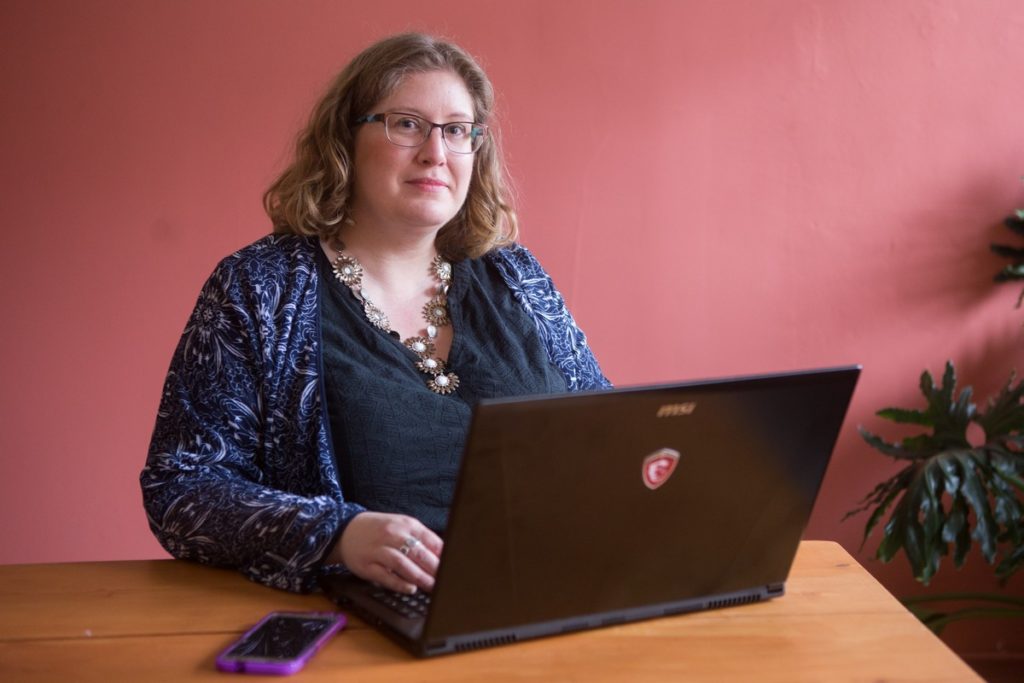
Let’s dig deep.
Every Monday, I send out my Body Liberation Guide, a thoughtful email jam-packed with resources for changing the way you see your own body and the bodies you see around you. And it’s free. Let’s change the world together.
Hi there! I'm Lindley. I create artwork that celebrates the unique beauty of bodies that fall outside conventional "beauty" standards at Body Liberation Photography. I'm also the creator of Body Liberation Stock and the Body Love Shop, a curated central resource for body-friendly artwork and products. Find all my work here at bodyliberationphotos.com.


![Illustrated Art Stock: Plus Size Woman Covered with Flowers [Body Liberation Stock exclusive] - Body Liberation Photos & Stock](https://bodyliberationphotos.com/wp-content/uploads/2024/09/Illustrated-Art-Stock-Plus-Size-Woman-Covered-with-Flowers-Body-Liberation-Stock-exclusive-94337-600x600.jpg)
![Illustrated Art Stock: Plus Size Woman Twirls in a Skirt [Body Liberation Stock exclusive] - Body Liberation Photos & Stock](https://bodyliberationphotos.com/wp-content/uploads/2024/09/Illustrated-Art-Stock-Plus-Size-Woman-Twirls-in-a-Skirt-Body-Liberation-Stock-exclusive-94328-600x600.jpg)
![Illustrated Art Stock: Plus Size Woman Twirls in a Skirt [Body Liberation Stock exclusive] - Body Liberation Photos & Stock](https://bodyliberationphotos.com/wp-content/uploads/2024/09/Illustrated-Art-Stock-Plus-Size-Woman-Twirls-in-a-Skirt-Body-Liberation-Stock-exclusive-94323-600x600.jpg)
![Illustrated Art Stock: Plus Size Woman with Hands Over Breasts [Body Liberation Stock exclusive] - Body Liberation Photos & Stock](https://bodyliberationphotos.com/wp-content/uploads/2024/09/Illustrated-Art-Stock-Plus-Size-Woman-with-Hands-Over-Breasts-Body-Liberation-Stock-exclusive-94318-600x600.jpg)
![Illustrated Art Stock: Plus Size Woman with Hands Over Breasts [Body Liberation Stock exclusive] - Body Liberation Photos & Stock](https://bodyliberationphotos.com/wp-content/uploads/2024/09/Illustrated-Art-Stock-Plus-Size-Woman-with-Hands-Over-Breasts-Body-Liberation-Stock-exclusive-94313-600x600.jpg)
